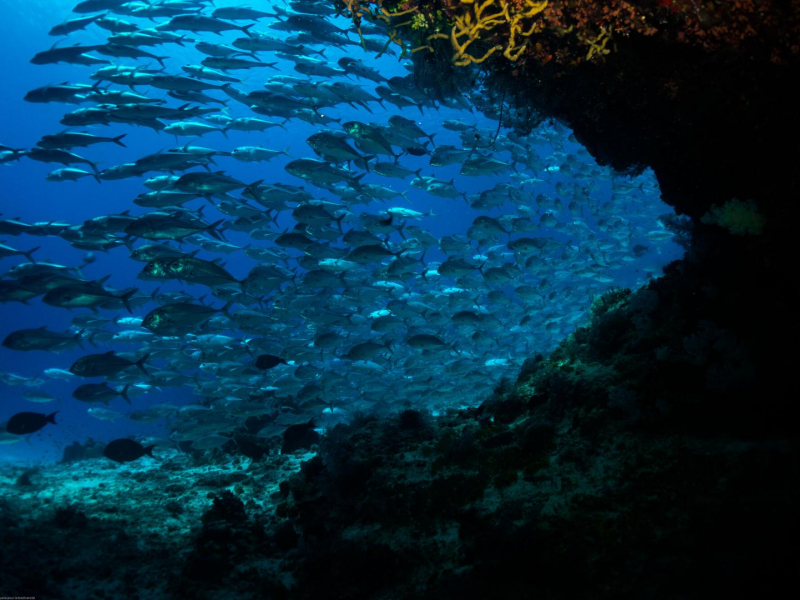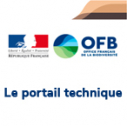Reefs far from humans

A mission to better understand the Zélée and Geyser shoals and the Glorieuses archipelago.
Due to the isolation of the coral reefs located to the north of the Mozambique Channel,their monitoring is complex, expensive and therefore rare. To assess their state of health, the Mayotte Marine Natural Park has set up a knowledge mission in cooperation with the French Southern and Antarctic Territories (TAAF).
The mission began on 20 September and ended on 12 December. It took place in three phaese, spending 29 days on the study sites: the Zélée shoal within the Mayotte Marine Natural Park, the Geyser shoal, Grande Glorieuse and the Lys island within the Glorieuses Archipelago National Nature Reserve.
Monitoring and assessing the health of reef ecosystems are central in the management of these protected areas given the accelerating climate change and the increasing exploitation of natural resources.
To acquire scientific knowledge for better management
The aim of the mission was to acquire new knowledge on the Geyser and Zélée shoals and to complete the existing monitoring in the Glorieuses in order to improve management measures.
Several scientific partners assisted the Park and TAAF teams in these missions, in particular the Entropy Joint Research Unit of the University of The Reunion island and the MAREX, GALAXEA and BIORECIF consultants.
Six goals :
- Monitoring of coral ecosystems with the installation of two new stations on the Zélée and Geyser shoals, and the monitoring of stations already in place in the Glorieuses archipelago
- The study of commercial fish populations by immersion of rorating cameras
- Monitoring sea cucumbers to assess populations and poaching pressure.
- Monitoring the macrofauna present in the sand to establish a reference state in the Glorieuses archipelago, and thus assess the degradation in the event of oil pollution.
- Monitoring the temperature of surface waters and the installation of a new probe on the Zélée shoal, participating in the monitoring of coral bleaching phenomena.
- Monitoring of macro-waste at sea to assess their quantity and origin.
Lay the foundations for cooperation between neighbouring marine protected areas
Ensuring a handover between management teams
Wealth of the archipelago marine environment andchallenge of protecting it led to the creation of the Glorieuses Marine Natural Park in 2012. The technical team of this park was common to the Mayotte Marine Natural Park, although the two parks have separate management boards.
Facing the inscrease of pressures (illegal fishing in particular) and the need to include the terrestrial perimeter in the protected area, the protection status of this territory evolved towards a National Nature Reserve created in June 2021. The management of the RNN of the Glorieuses archipelago is entrusted to the Préfêt, Superior administrator of the TAAF.
This joint mission ensures the continuity of the actions implemented in the former Park in terms of monitoring, but also guarantees the harmonisation of the methods and protocols implemented in the two areas so that the results obtained can be compared.
Carrying out a comparative study between similar ecosystems subject to various pressures
Mayotte, the Glorieuses archipelago and the Geyser and Zélée underwater banks have ecosystems that are both rich and fragile. One of the common challenges of the RNN of the Glorieuses archipelago and the Mayotte Marine Natural Park is to guarantee the maintenance of marine resources, both for environmental and socio-economic reasons. However, the management issues remain distinct due to the specificity of these two territories.
Due to its isolation and the absence of permanent inhabitants, the Glorieuses archipelago has an exceptional natural heritage in a quasi-original state. Considered as a reservoir of biodiversity, it is a reference point on a regional scale, particularly for measuring the effects of climate change on the environment. In Mayotte, marine ecosystems are increasingly exploited due to the pressures of human activities, both at sea and on land, in a context of an increasing demography.
This joint campaign, which follows identical protocols, will enable to study variations in the state of health of marine ecosystems from Mayotte, subject to the greatest pressures, to the Glorieuses archipelago where activities are strictly regulated.
Pooling resources and ensuring continuity of monitoring
To ensure the three missions scheduled for this campaign, the synergy between the Park and the TAAF allows, from an operational point of view, the pooling of human resources, in particular through the provision of professional divers from both structures, the joint mobilisation of external experts as well as logistical and material resources.
The first two missions were carried out in September and October 2021 on the vessel Antsiva. More than fifty dives were conducted, with the deployment of underwater instruments on site, the collection of samples, and thus the achievement of a large part of the campaign's objectives.
The 3rd mission benefited from the support of the Armed Forces in the Southern Indian Ocean Zone (FAZSOI) through the mobilisation of the Overseas Support and Assistance Ship (BSAOM) Champlain and the participation of its crew in scientific operations at sea.
The first results
- New species for the territories of the Glorieuses archipelago and Mayotte were identified among nudibranchs, fish and crustaceans.The observation of a decrease in sea cucumber populations and fish of commercial interest confirms the presence of illegal fishing pressure in the waters of the Glorieuses archipelago.
- The experts found that the coral populations are in good health, their exceptional diversity seems stable over time, although there are still some traces of the last bleaching episode linked to the water warming in 2016.
A video about the mission
The remoteness of the coral reefs located to the north of the Mozambique Channel makes their monitoring complex, costly and therefore rare. In order to assess their state of health, the Mayotte Marine Natural Park has set up a knowledge acquisition mission in cooperation with the French Southern and Antarctic Lands and with the support of the Armed Forces of the Southern Indian Ocean Zone. The mission began on 20 September and ended on 12 December. It took place in three phases, spending 29 days on different study areas: the Zélée shoal within the Mayotte Marine Natural Park, the Geyser shoal, Grande Glorieuse and the Lys island within the National Nature Reserve of the Glorieuses archipelago.




